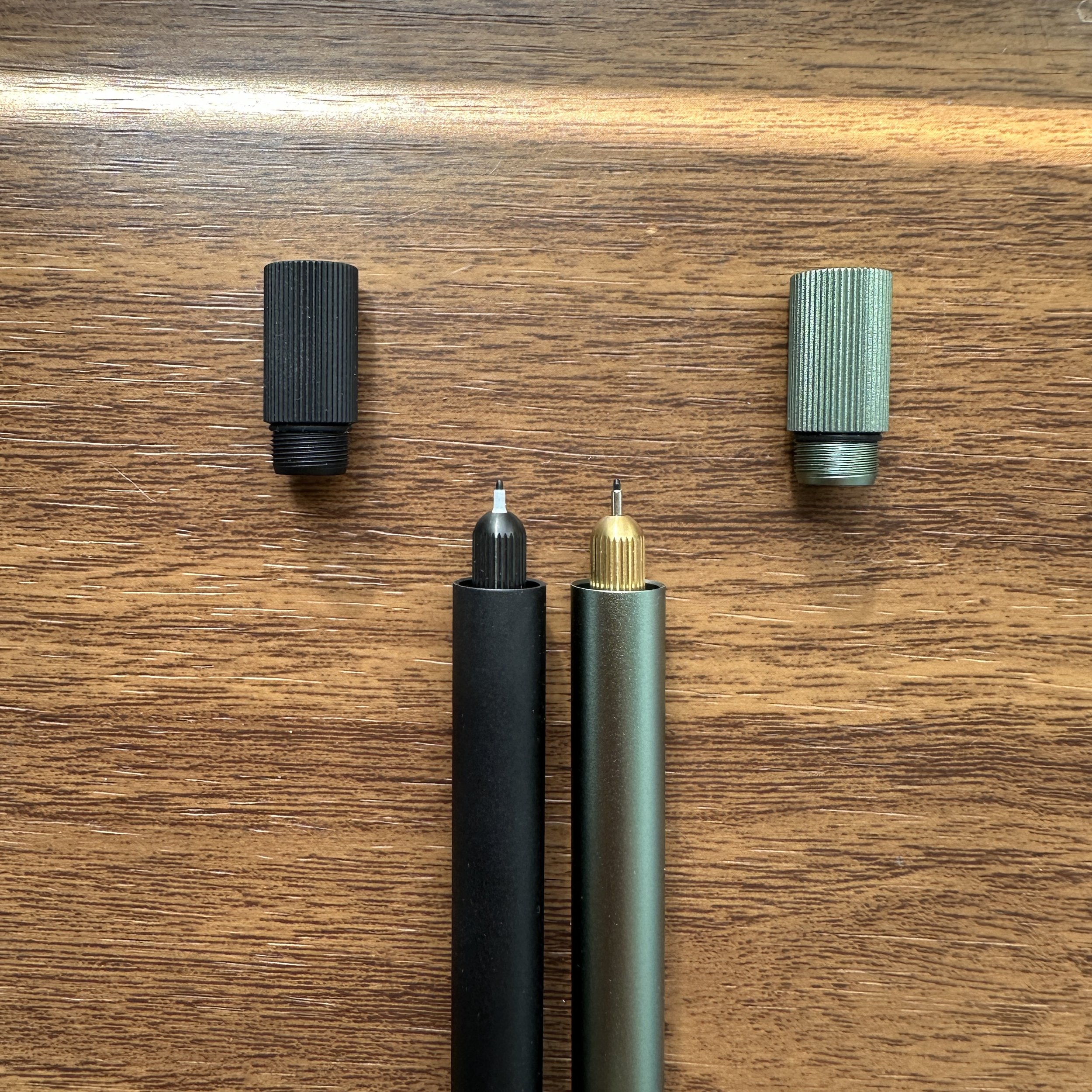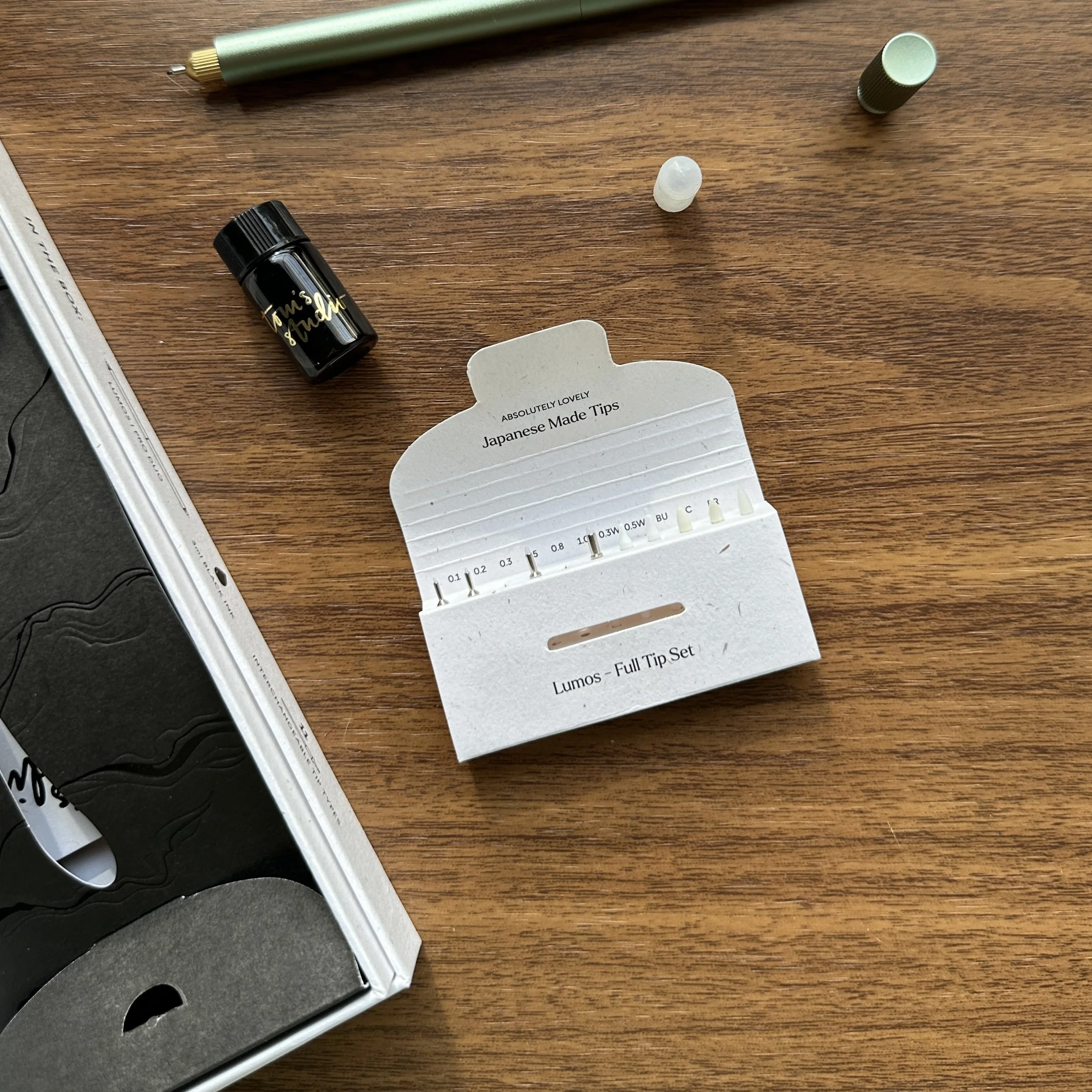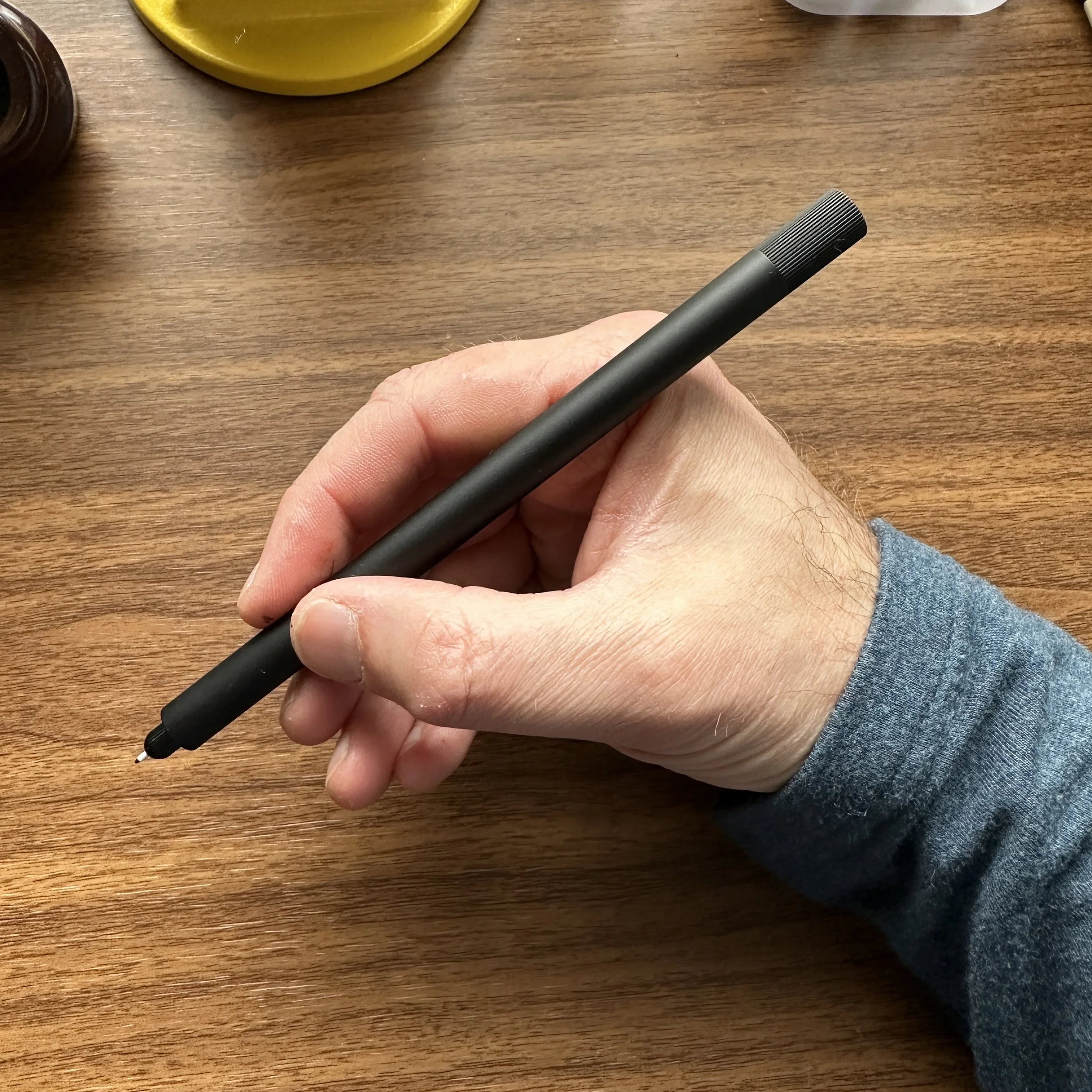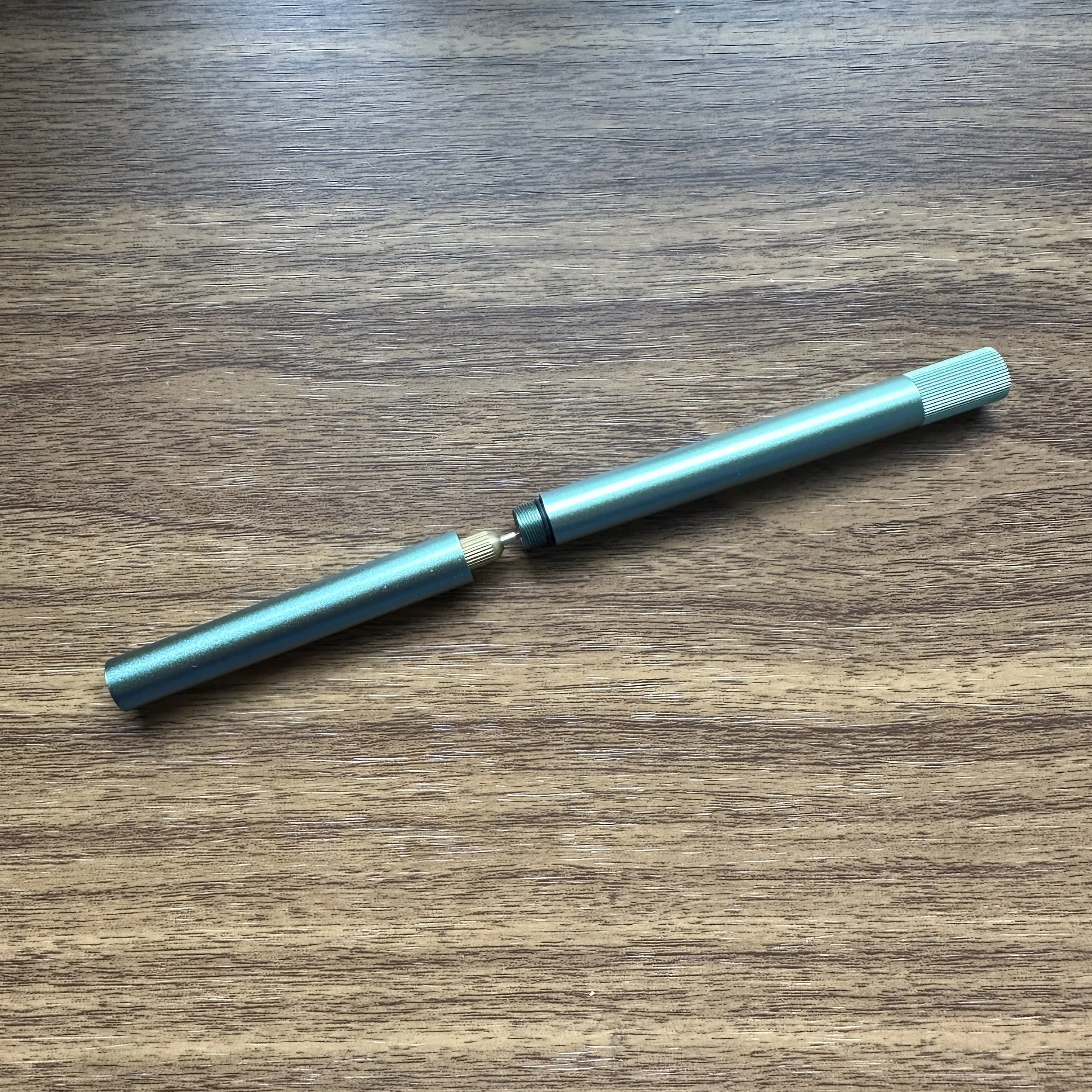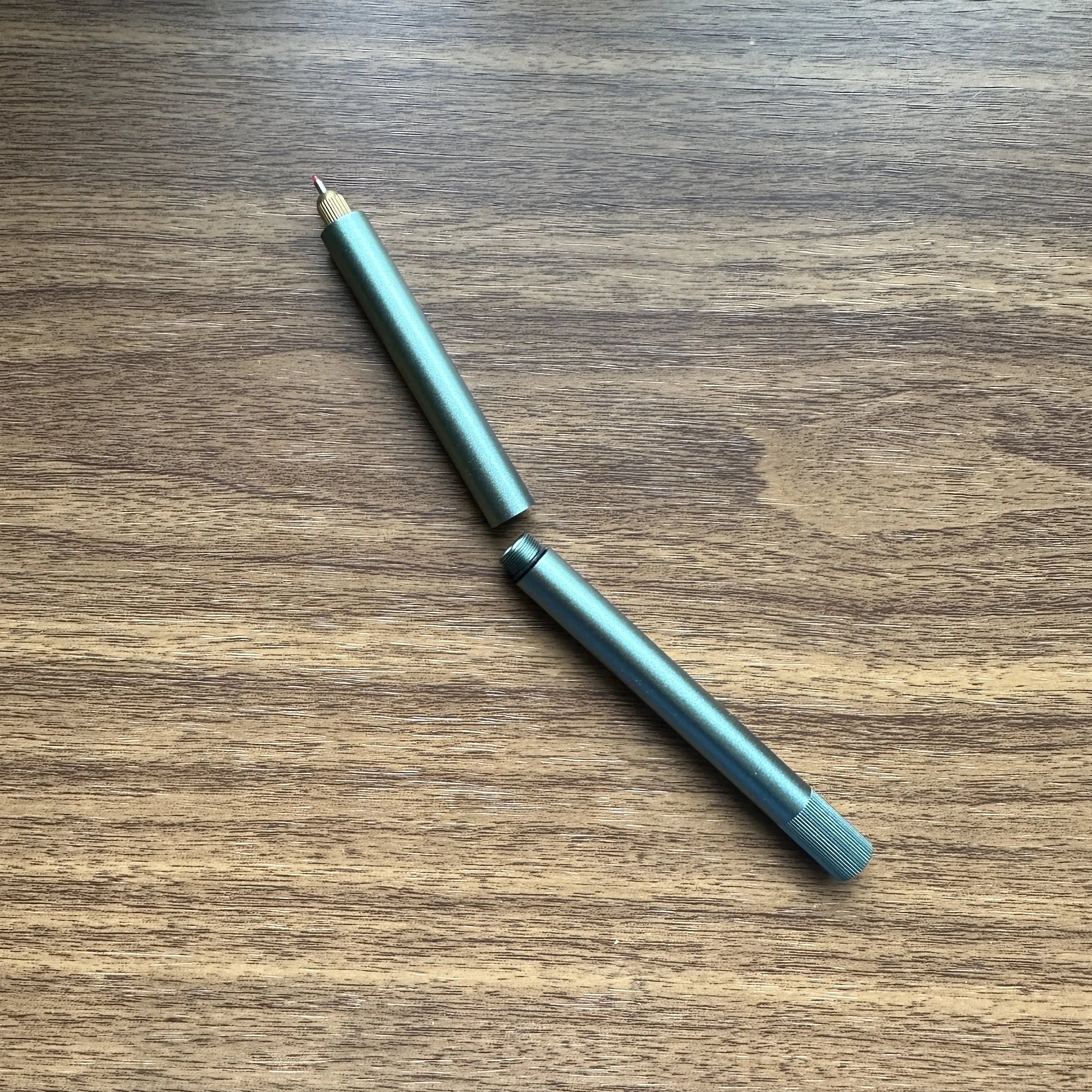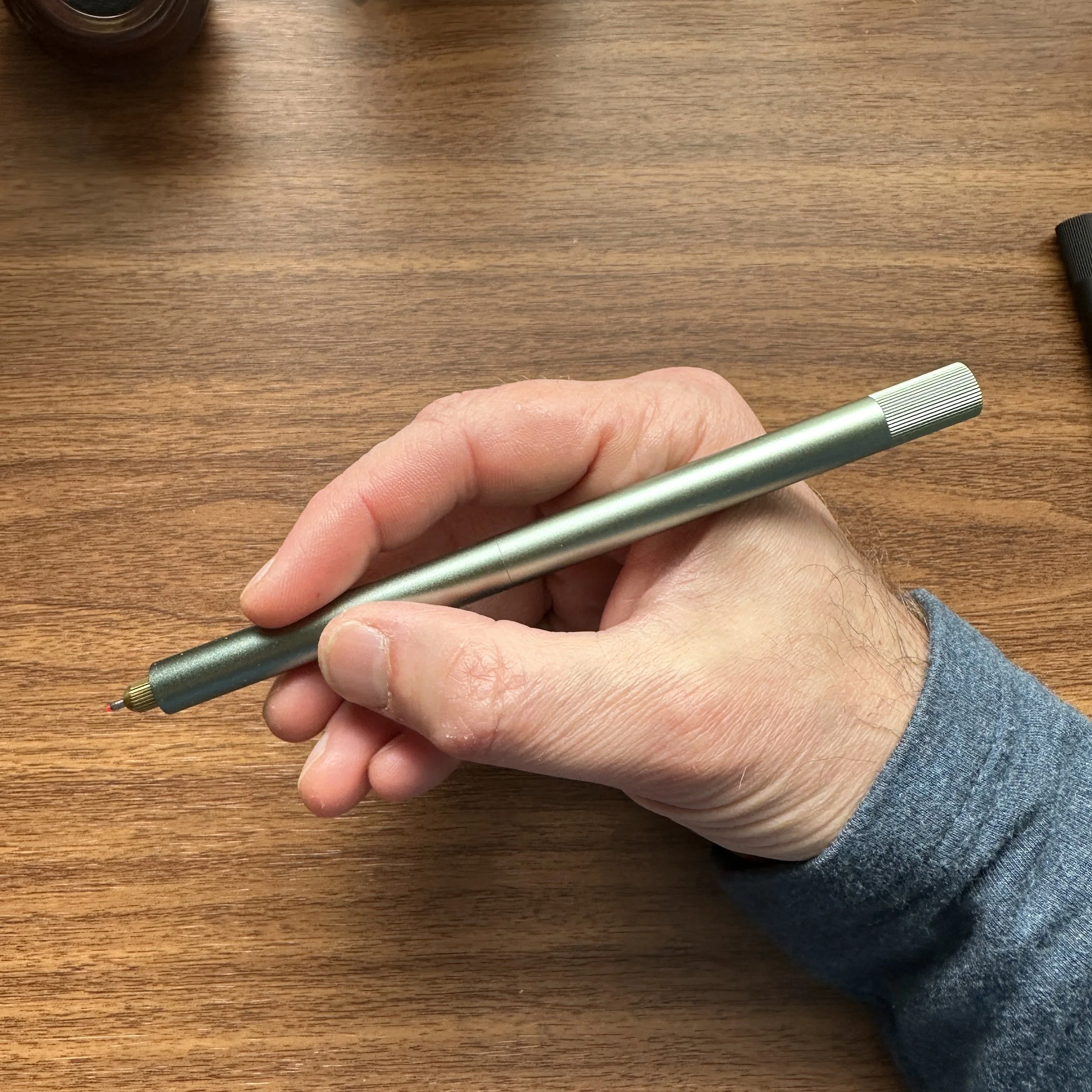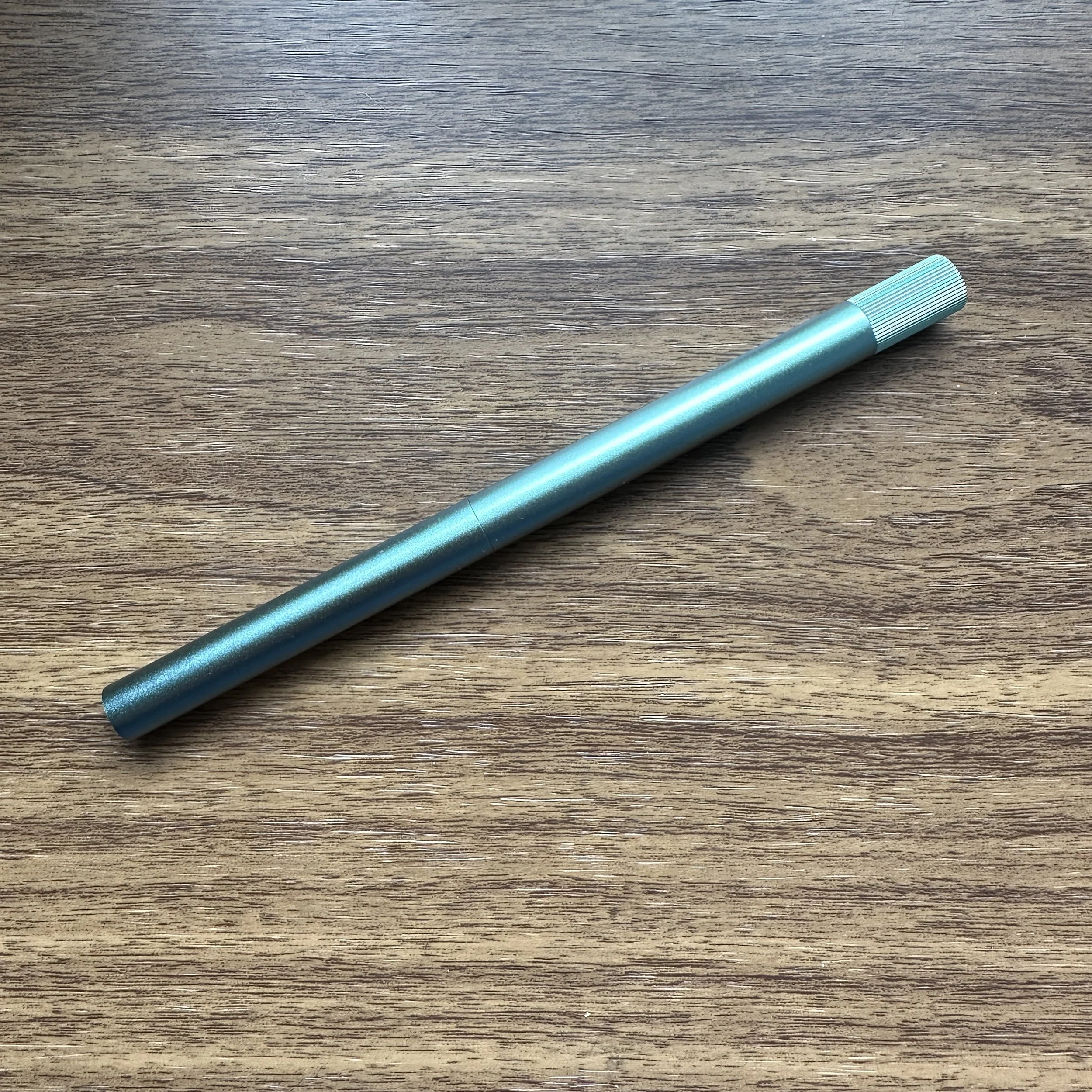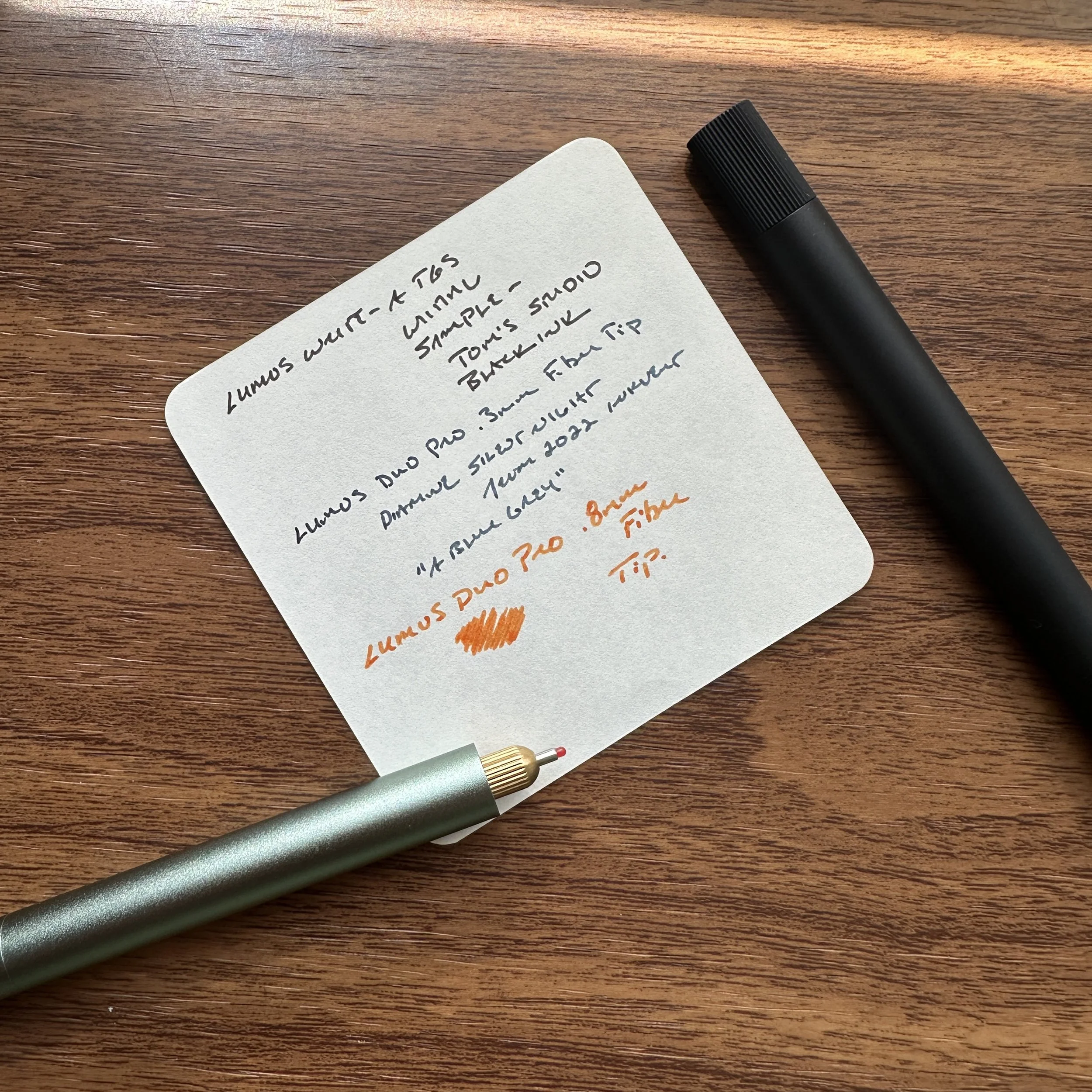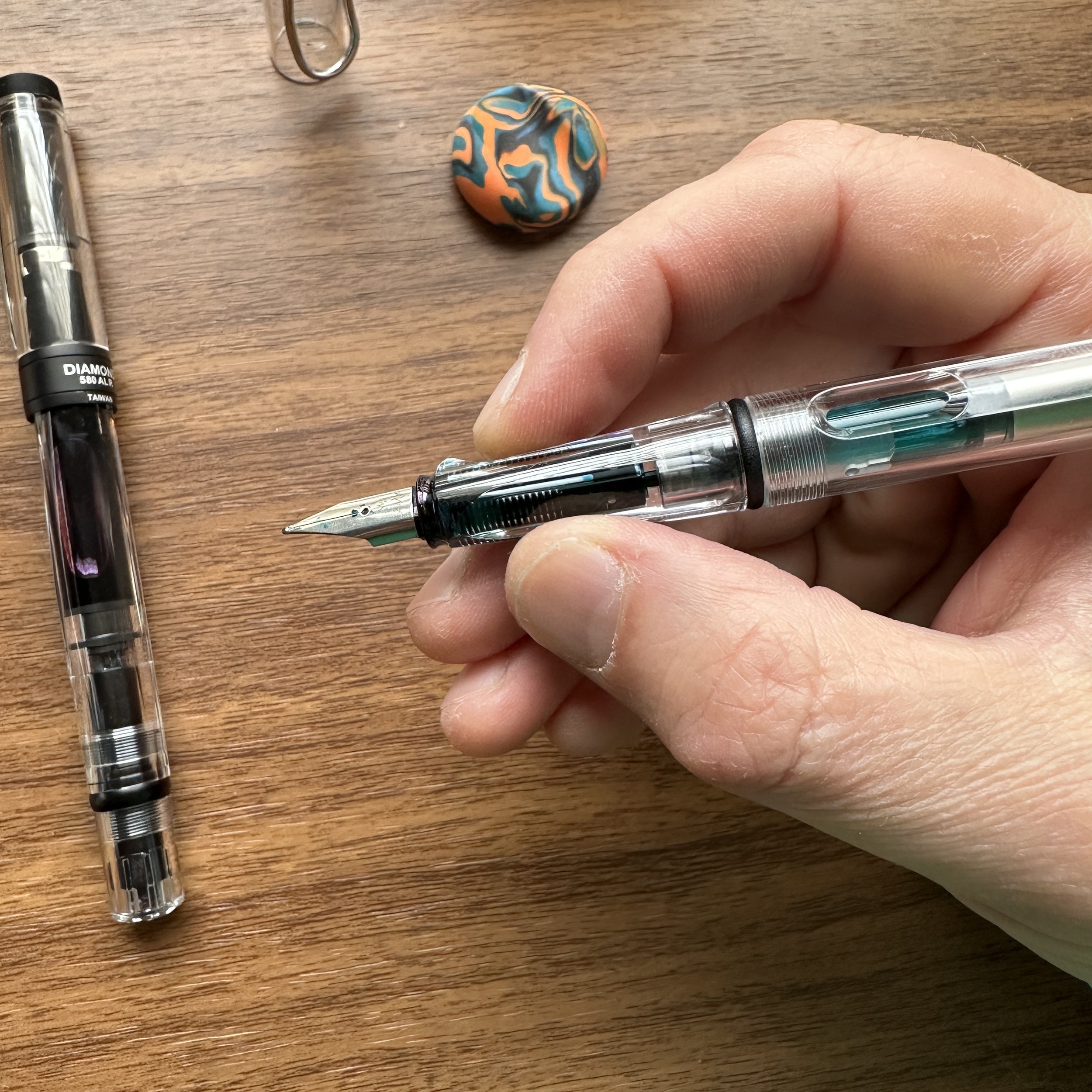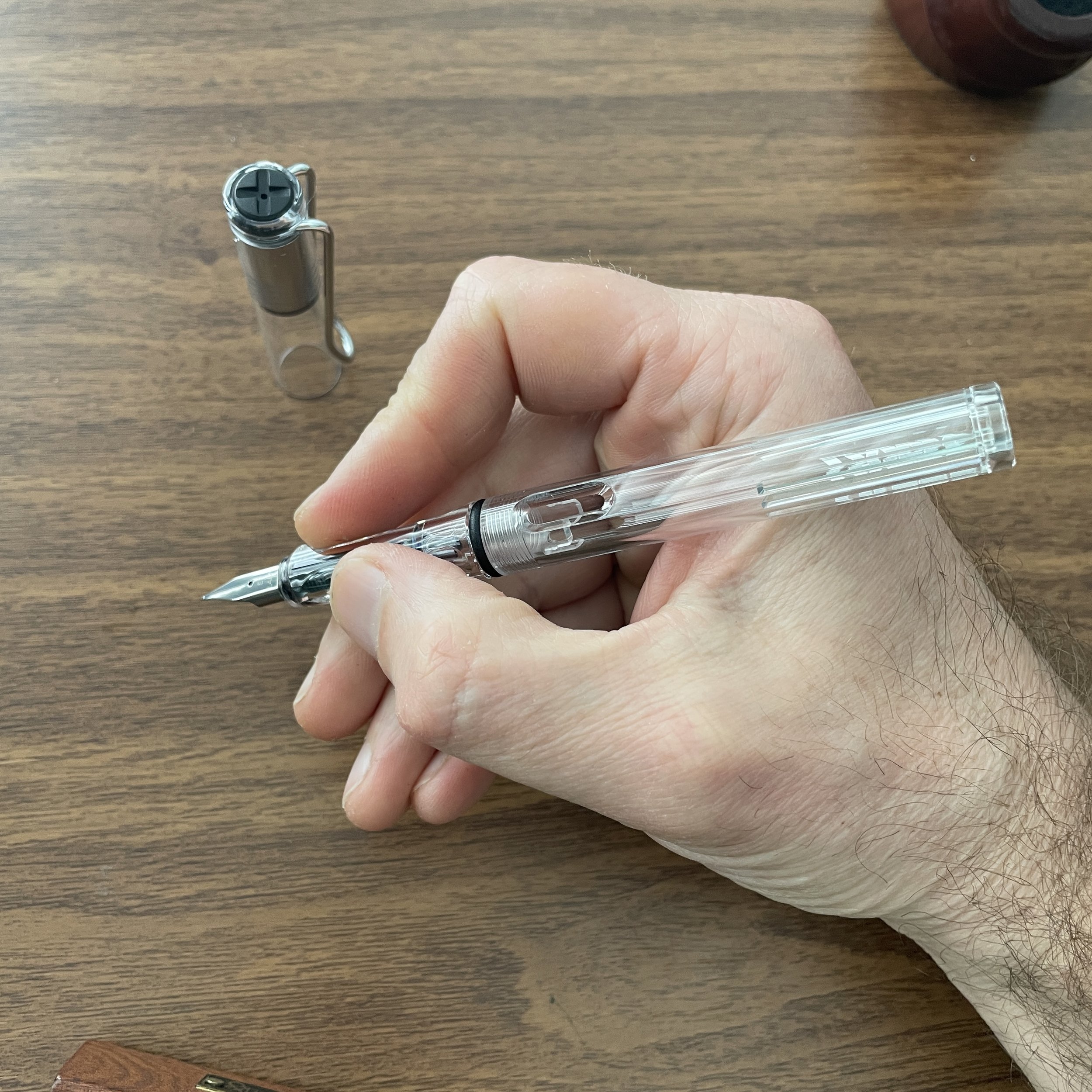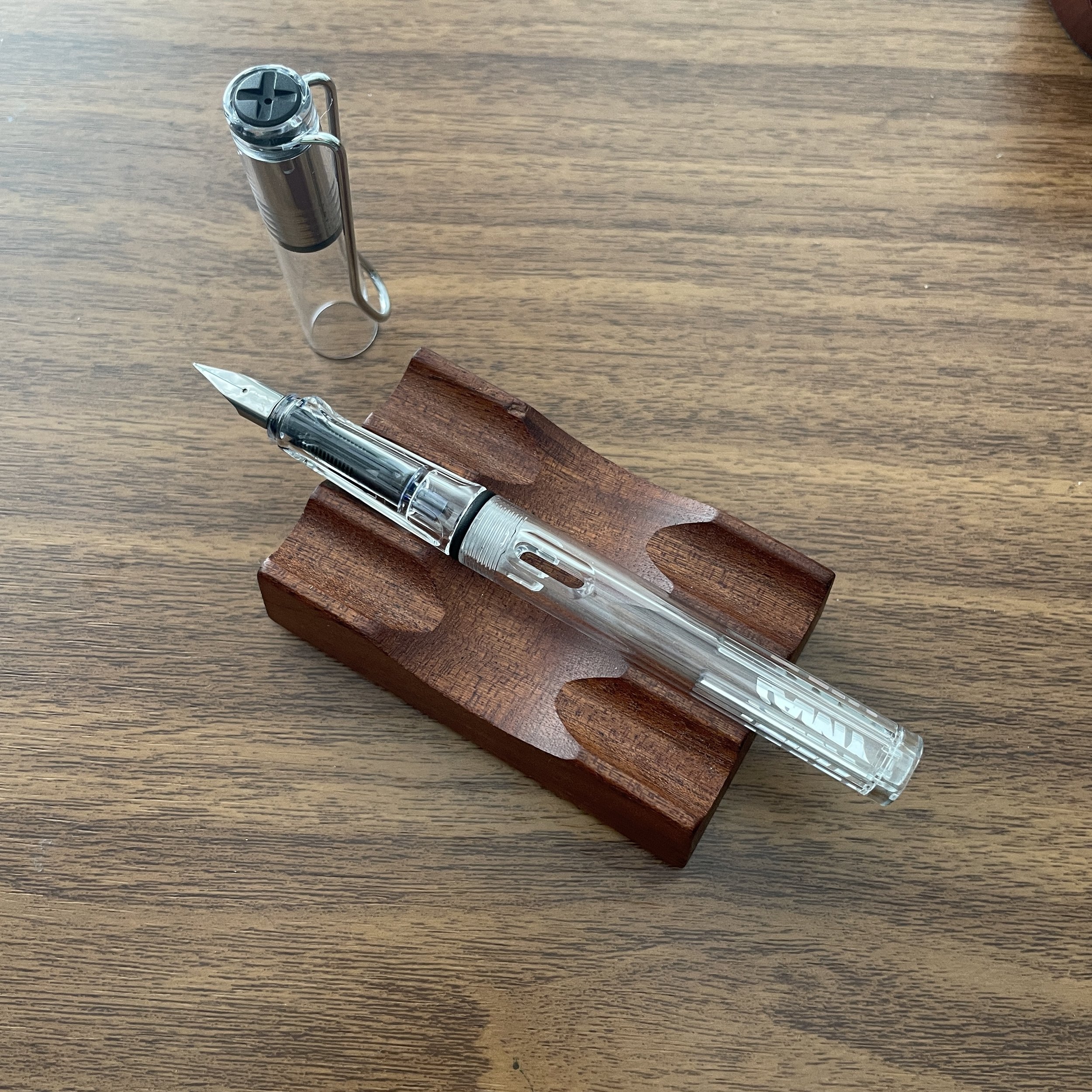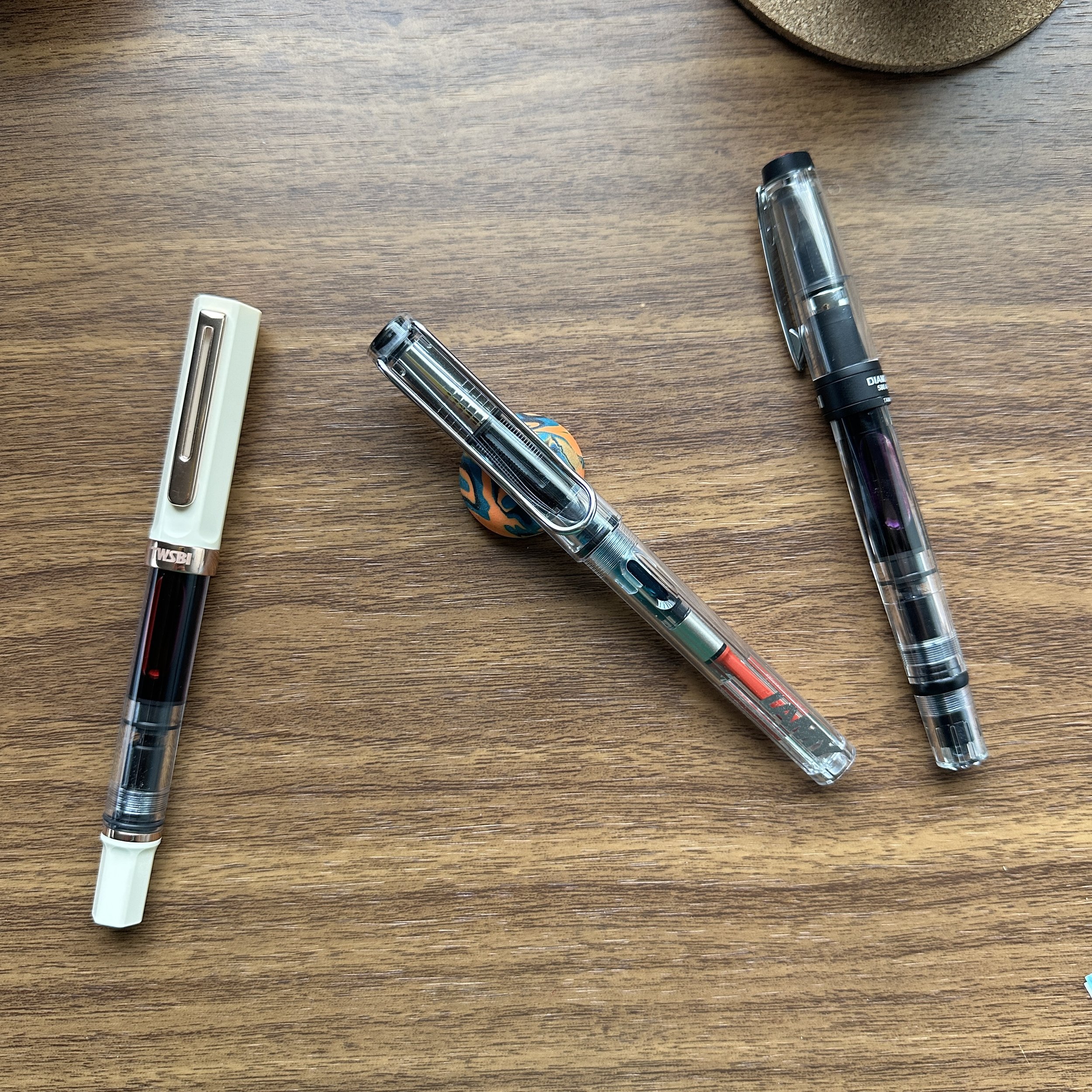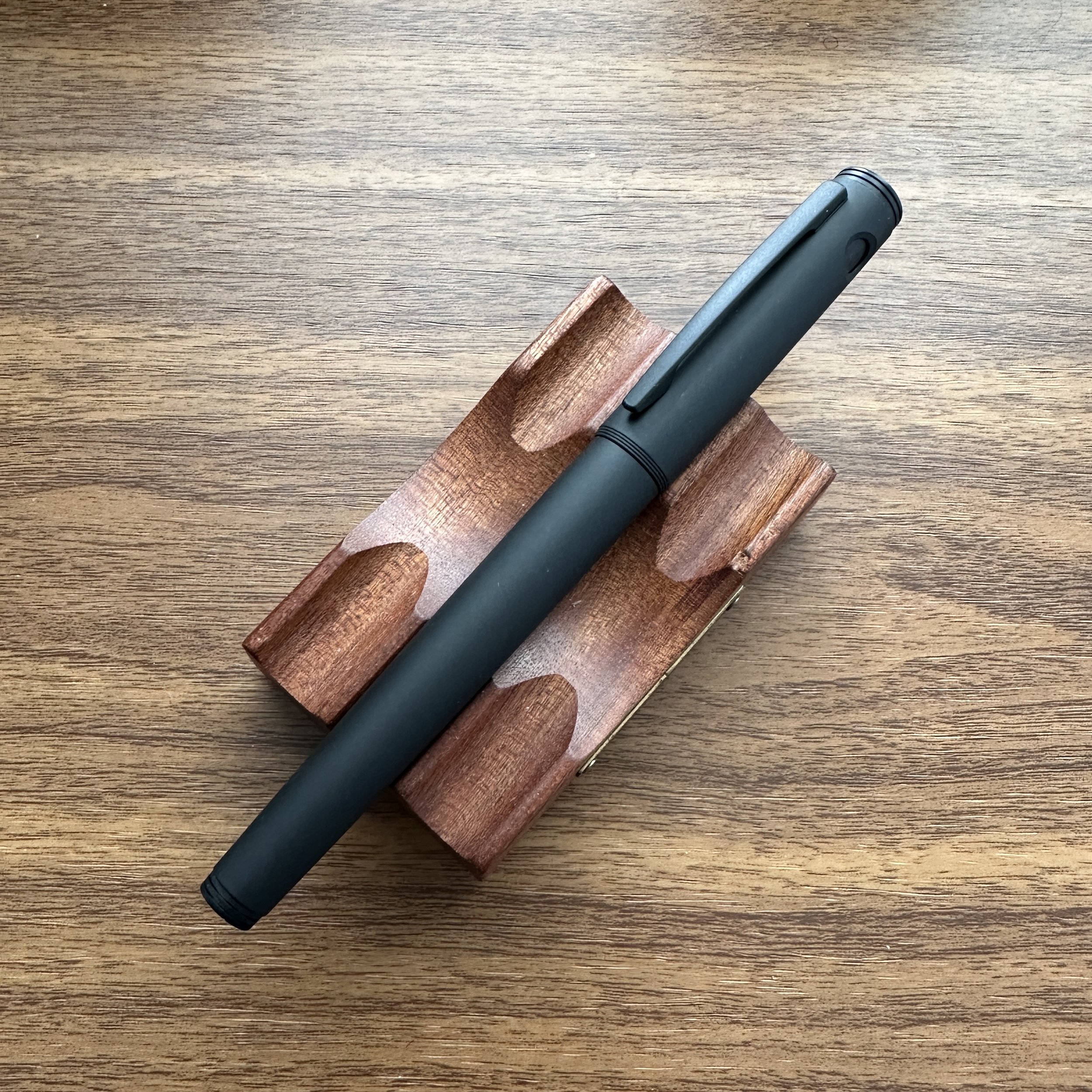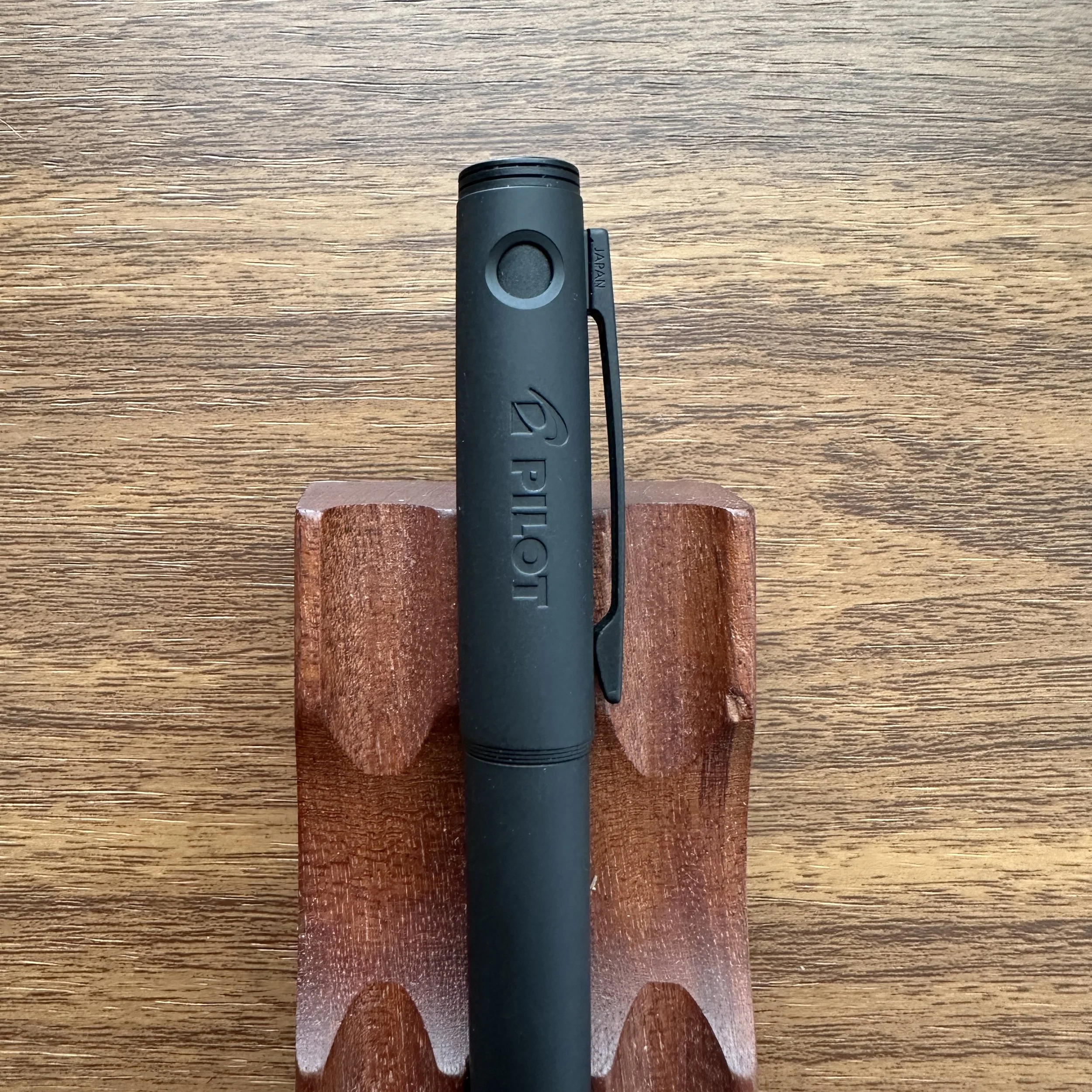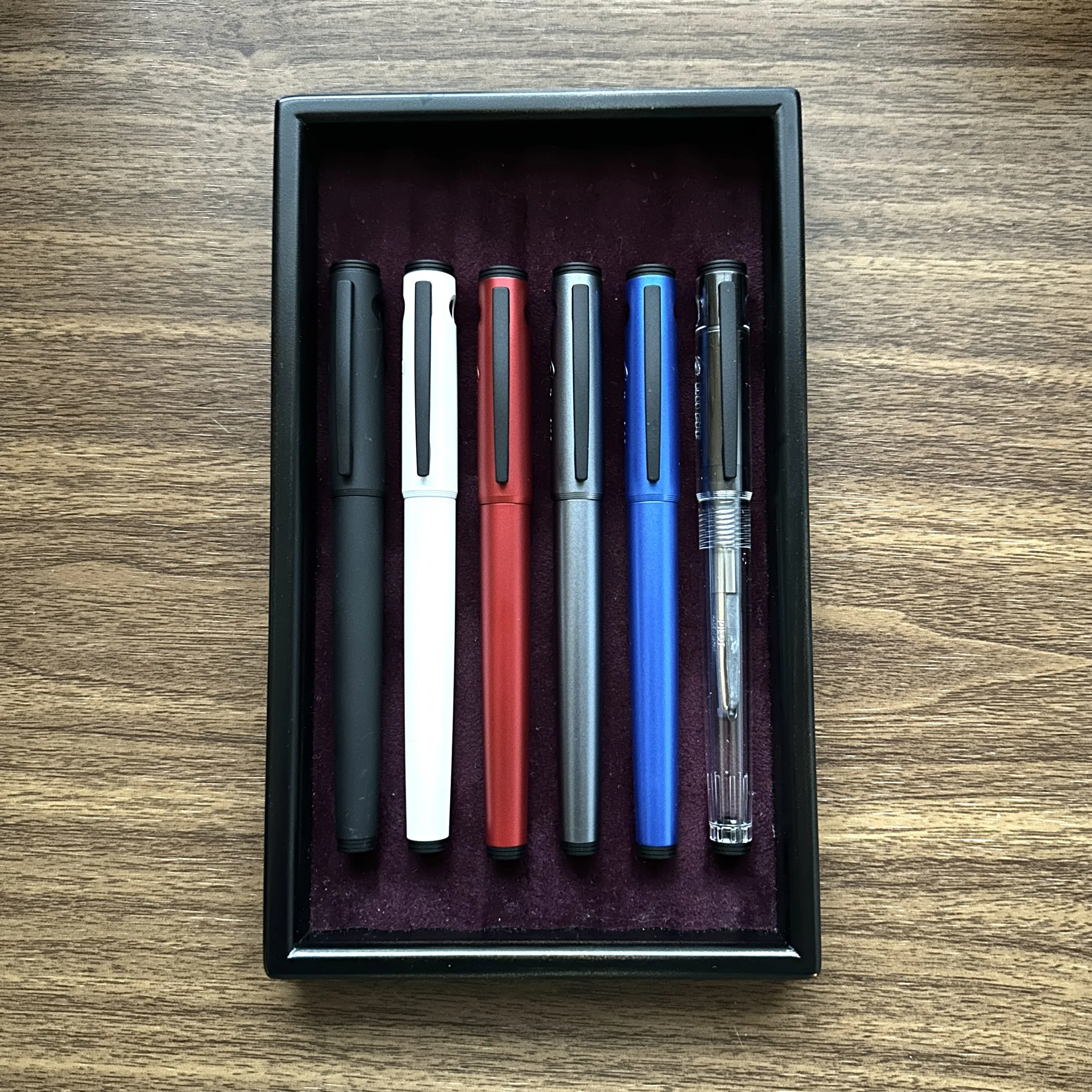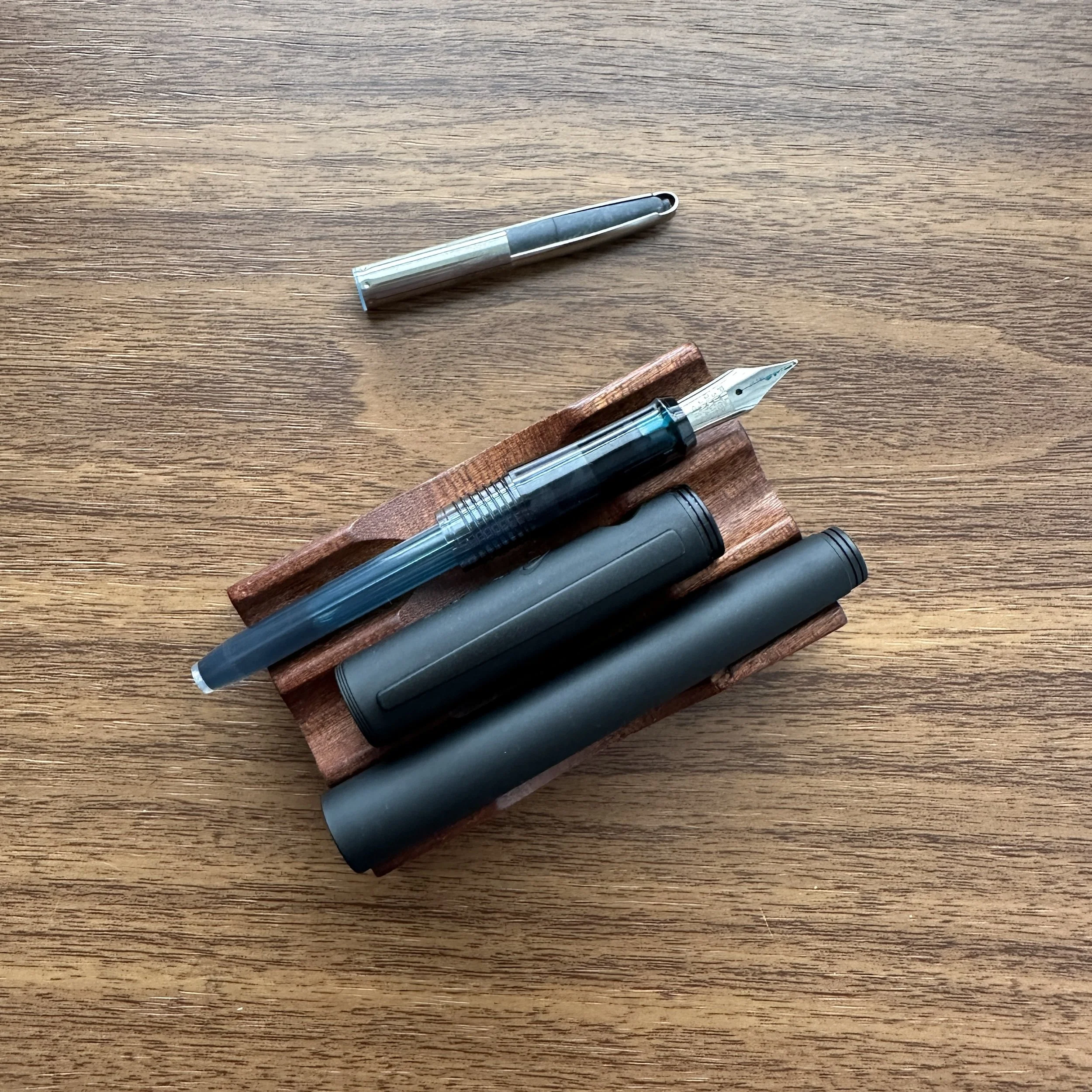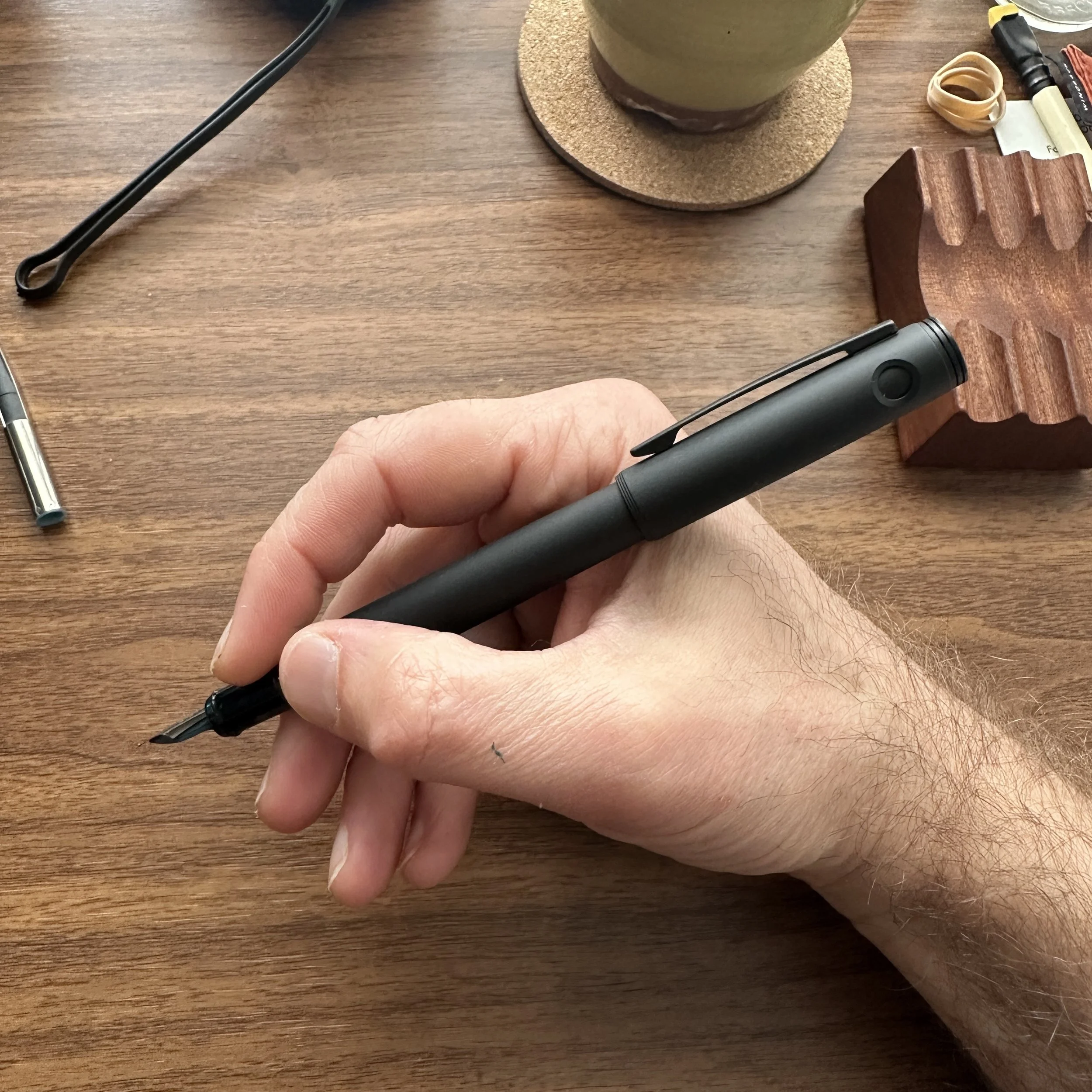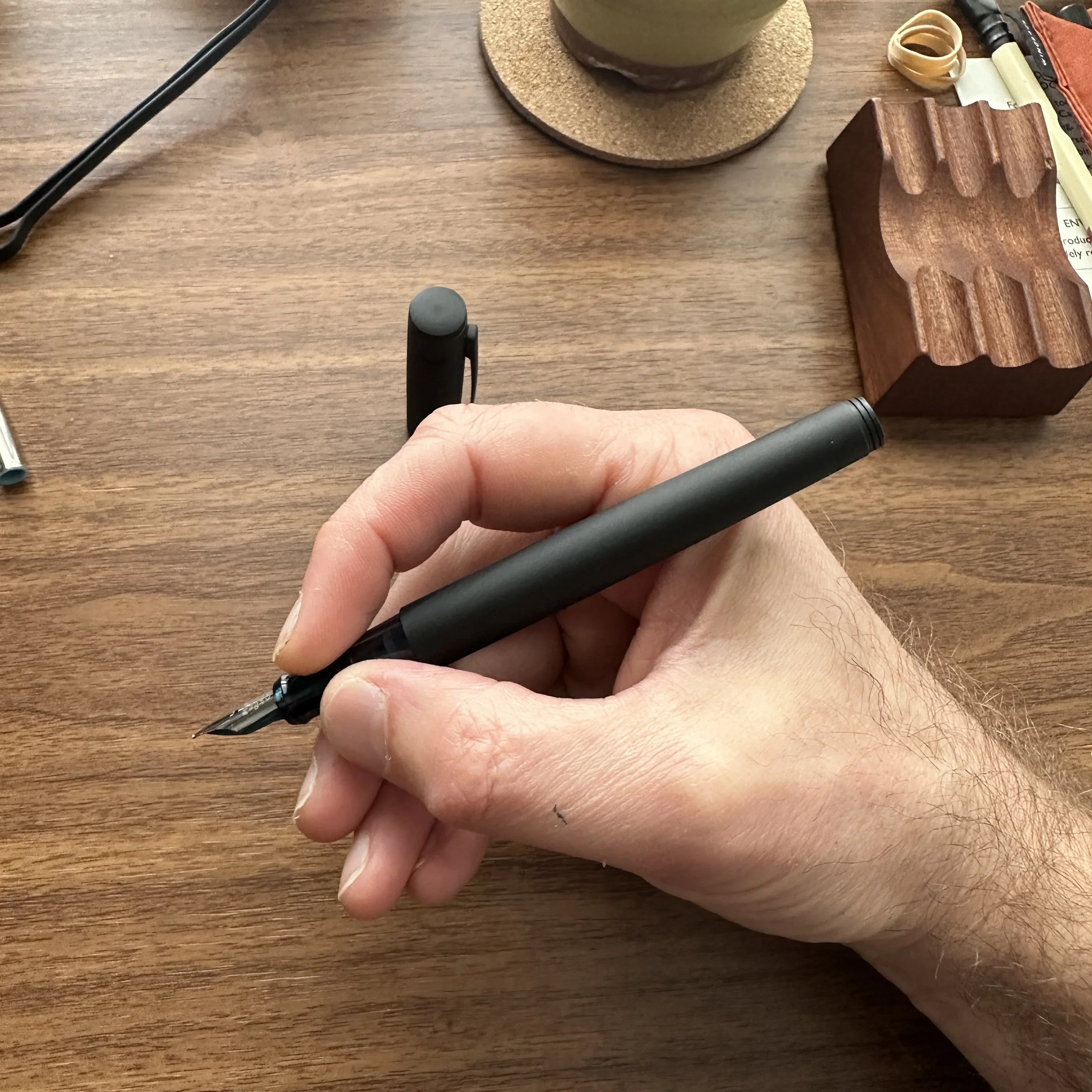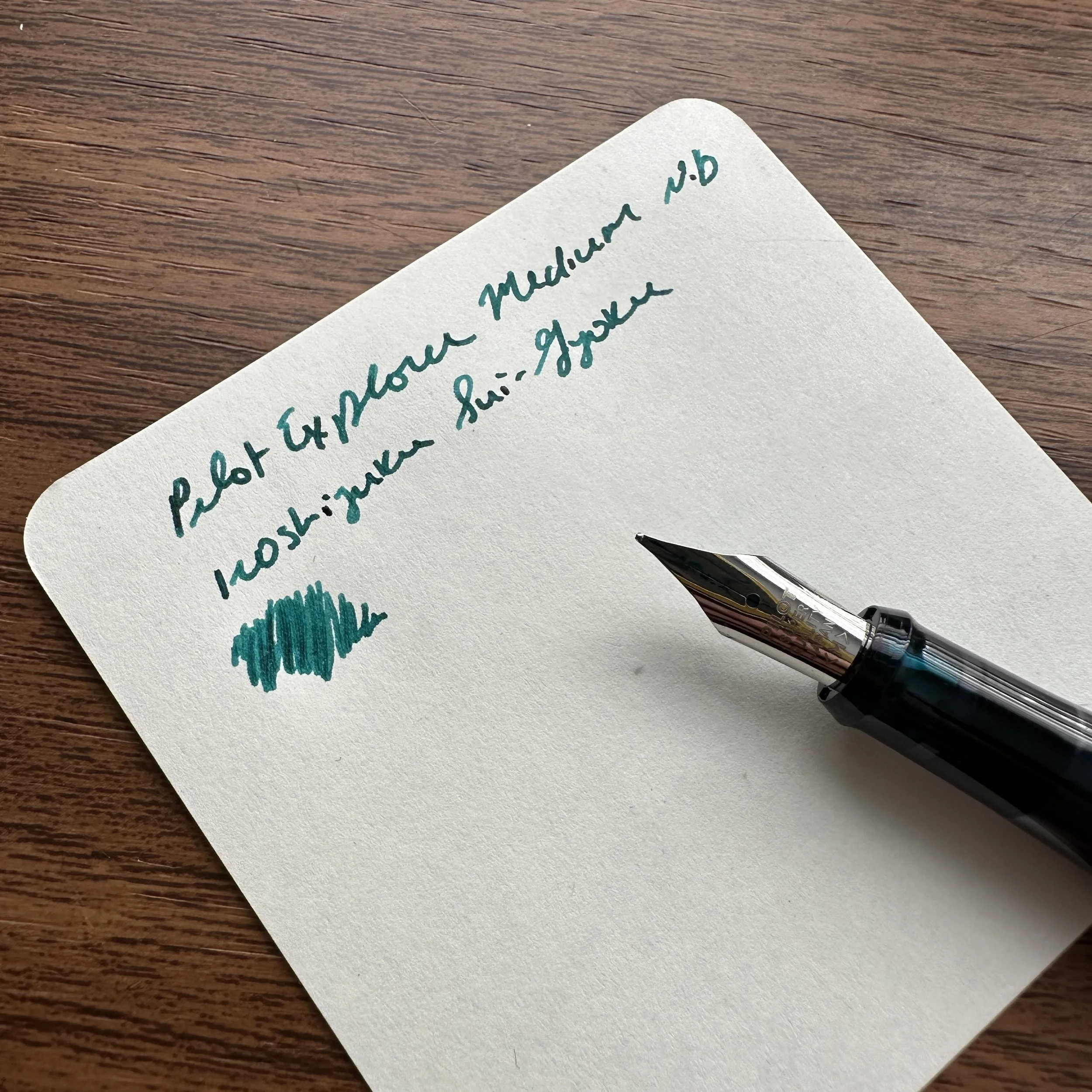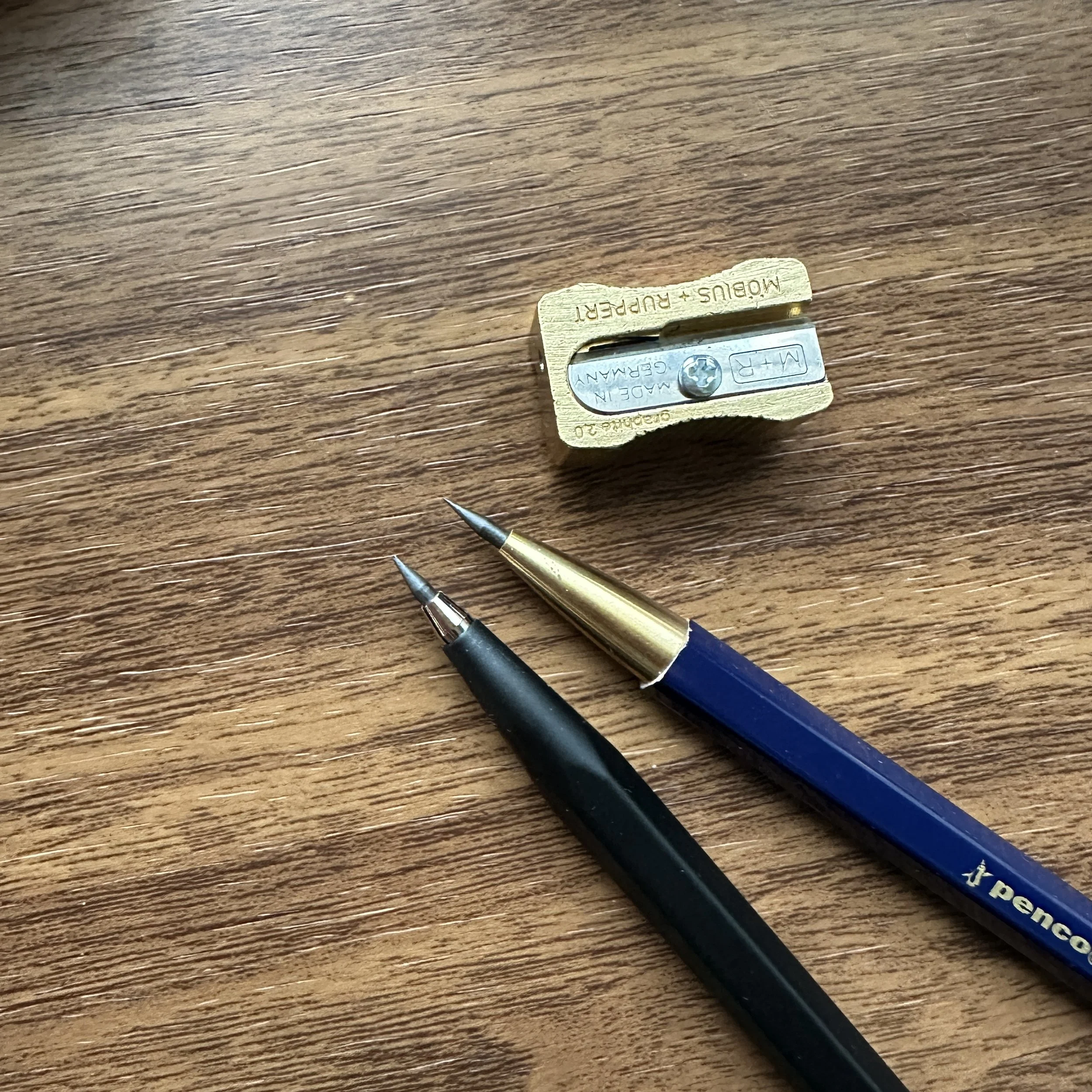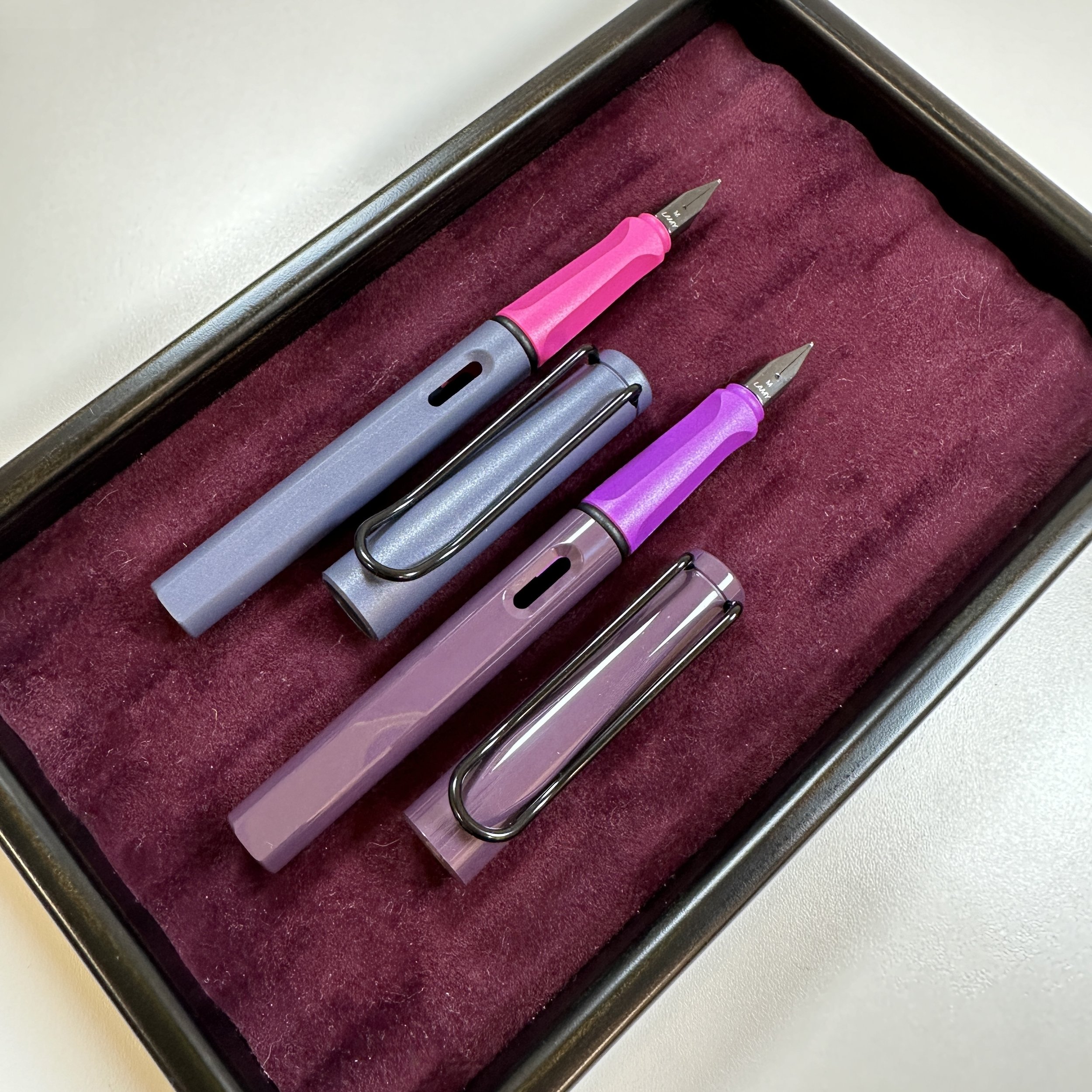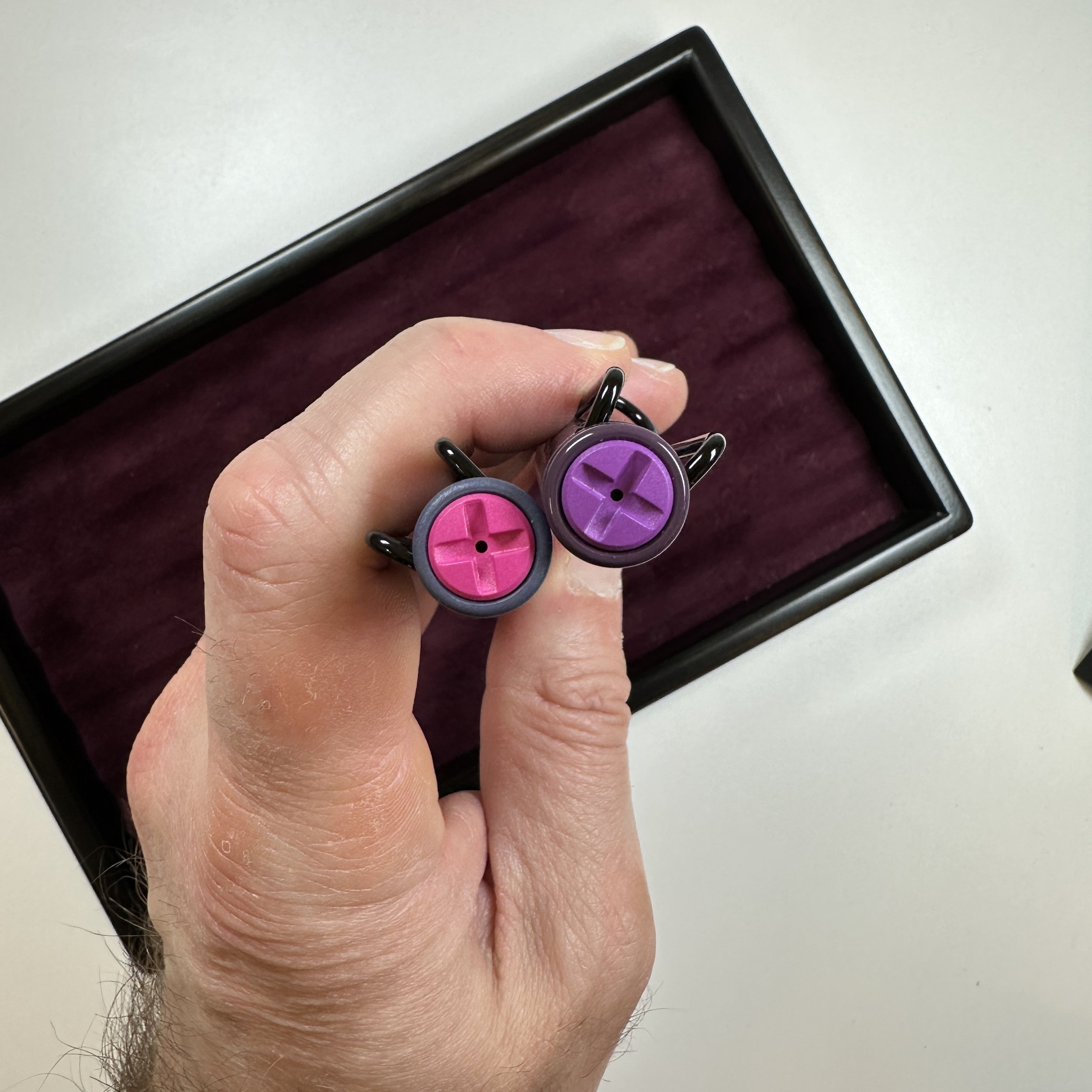So far, the answer is a resounding "Yes". Though most of my everyday non-fountain pen writing is done with a ballpoint or a pencil, fineliners are a long-time favorite, especially in terms of how they feel putting ink on the page. Fineliners and other fibre-tipped pens require less pressure and allow you to get line variation that’s typically only achievable with a fountain pen. The downside? Generally speaking, fibre tips don't last very long (especially if you write with a heavier hand), are not replaceable, and you can't change the ink color. Enter the Tom's Studio "Lumos" Series, which I first saw in person at the Arkansas Pen Show when one of my friends had them on hand....
Note: For purposes of this post, I use the term "fineliner" loosely. There are differences between true "fineliners" intended primarily for writing (such as the Pilot Razor Point, Razor Point II, and Schmidt and Montblanc fineliner refills) and others intended more for the art market that feature softer tips (such as the Sakura Pigma Micron and felt-tipped art pens). I tend to use "fineliner" as a catch-all term for any pens that feature a fibre or porous plastic tip. Tom's Studio describes the Lumos as a "Multi-Tip Pen", and distinguishes between Micron-style, writing, and brush-like tips when describing the different types of tips available for purchase.
The tip set that’s included with the Lumos Pro Duo.
Put simply, the Lumos is a refillable pen capable of using a variety of fineliner-style tips, which range from .1mm Micron-style to firmer .3mm and .5mm traditional “writing” fineliners to marker-style brushes and chisels. The pen fills using a wick-like ink reservoir and capillary action - essentially the same as your standard disposable fineliner pen, only here you have easy access to the components so that you can refill the pen with the ink of your choice and replace the tip. Here's how it works:
Refilling the Pen
Refilling the pen is pretty straightforward: Unscrew the tip cover (which protects the fibre tipping), then unscrew the entire "nib" portion of the pen to remove the wick/reservoir. Designed to take liquid ink (either pigmented/permanent or standard water-based fountain pen ink), you fill all Lumos pens by dipping the end of the reservoir into the the ink bottle and watching the ink saturate the wicking material all the way up to the nib. (I posted a YouTube Short showing how this works.)
The Lumos “Write” completely disassembled. The wick/reservoir and tip are both replaceable. One reason I think the Lumos works so well is because Tom’s Studio attempted to duplicate how a traditional disposable fineliner supplies ink to the tip, using a similar “filling” mechanism. Other attempts at a refillable fineliner have tried to transpose a fountain pen-style cartridge converter system, which in my opinion doesn’t work as well.
The wicks come in two different styles: a shorter version designed to fit the Lumos "Duo" and pocket sizes, and a longer high-capacity reservoir designed to fit the Lumos "Write" (shown above). The wicks/reservoirs friction-fit into the "section” of the pen. Tom's Studio recommends that you insert them all the way, then pull them out slightly (1-2mm) to allow for better ink flow. I'm still working my way through my first fill on these pens, so I don't know exactly how long the ink lasts, but I imagine it's going to be a while before I have to refill them. Tom's Studio says that the reservoirs are easily rinsable and reusable if you want to change colors, but given how inexpensive the refills are, I would probably recommend sticking to a single color of ink per refill. It's easier to flush out and clean the fibre tips, so you can always keep multiple inked reservoirs and change them out as necessary. Per Tom's Studio, they can be stored in an airtight container (such as a plastic bag or ink sample vial) while inked.
The shorter wick on the Lumos Pro Duo (because you need to be able to fit two of them in the barrel). To fill you dip the end in the ink. The cotton core material is encased in plastic/vinyl, with only the end exposed, to minimize any mess inside the pen and on your hands.
Changing Fibre Tips
The second feature of the Lumos series is the interchangeable fibre tips. While swapping multiple tips "on the go" probably won't be practical, a pen like the Lumos "Pro Duo" allows you to have two different tip sizes and/or styles installed in a single pen which you can alternate easily. The first tip is covered by the cap (sealed with an o-ring), while the second tip is stored inside the barrel (also sealed with an o-ring). To write with the first tip, simply uncap the pen. To use the second tip, unscrew the back half of the barrel and invert it, as shown in the pictures below. It's quite a nifty design!
Here I have .3mm and .8mm Micron-style tips installed in my Pro Duo (shown here in the Sage finish). The “Pro Duo” is actually two mini pens that fit together.
When you do want to install a different tip in your Lumos pen, the process is again straightforward: simply unscrew the tip cover, gently pull the tip from the holder with your fingers, and replace with the tip of your choice. Each unit has a fibre "feed" that will extend into the cotton wicking material inside the reservoir and pull ink up through the tip.
Takeaways and How to Buy
So far, the two pens that I have in rotation work exactly as advertised and I'm thoroughly enjoying both the Lumos "Write" in matte black and the Lumos "Pro Duo" in Sage. (For what it's worth, all of the various anodized colors look great in person.) Who would I say this pen is for? If you only occasionally use fineliners, or you have a single style/tip size of Sakura Pigma Micron that you prefer, the Lumos pen might be overkill. BUT, if you're like me, and would prefer to have a fineliner be your secondary writing instrument of choice but have been frustrated by having to throw out half-full disposable pens and/or replace very expensive dried out proprietary refills after only a couple of weeks, then the Lumos series should be on your radar. To be clear, this is a pen for tinkerers and those who enjoy playing around with fun stationery. Changing fibre tips and cotton wick-style reservoirs will probably get your fingers inky! That said, setting up and using these pens is both easy and intuitive, and Tom’s Studio supplies a tutorial and other information on their website.
I’ve filled my pens with fountain pen ink so far. I look forward to experimenting with pigmented and permanent inks, which is what many people like about fineliners.
We currently have a small shipment of the Tom's Studio Lumos "Write" and Lumos "Pro Duo" pens available for purchase in the shop. The single-tip "Write" pens ($69.50) ship with a .3mm firm “writing” tip and a small bottle of black ink, while the "Pro Duo" pens ($120) include the double-tipped pen, a set of eleven different tips, and the ink bottle. You can separately purchase a set of extra tips. We should have additional Tom's Studio products available in the future, including the fountain pens and nibs as well as more Lumos pens and replacement components.
The Gentleman Stationer is supported entirely by purchases from the T.G.S. Curated Shop and pledges via the T.G.S. Patreon Program.
